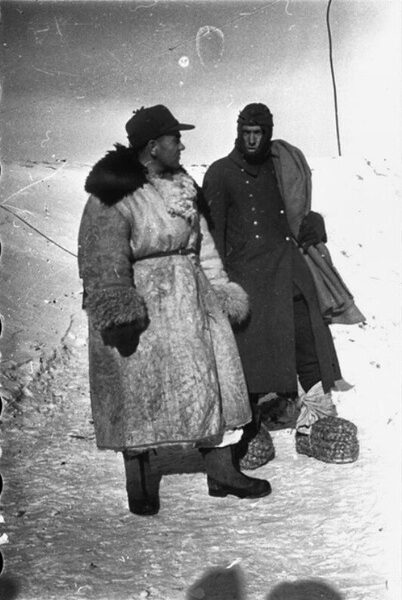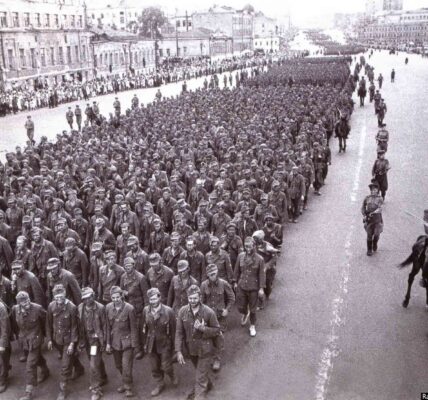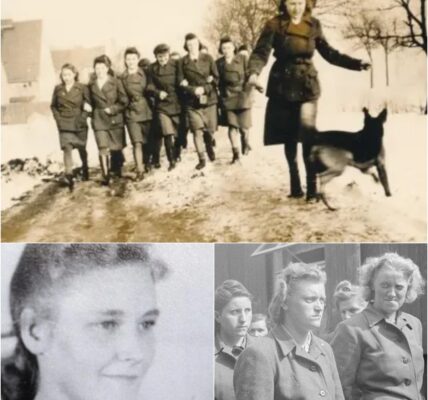
The winter of 1942/43 marked one of the most tragic turning points in the history of World War II. The Battle of Stalingrad, one of the most brutal and costly engagements of the entire conflict, became a symbol of human suffering, strategic failure, and the end of military arrogance.
The following images show not only destroyed buildings and frozen landscapes, but above all, faces – exhausted, starving, desperate men whose gaze tells more than any history book. Young soldiers, many barely older than 18, sat for days in bombed-out houses, without food, without hope – only the certainty that escape was impossible.

Stalingrad was more than a strategic point on the map. It was the place where an entire army was encircled—cut off from supplies, protection, and reinforcements. Temperatures dropped to minus 30 degrees Celsius. The wounded lay uncared for, and some soldiers had to melt snow water for their drinks and warm themselves in ruins that no longer offered any protection.
Propaganda promised “victory at all costs,” but the reality was complete chaos. Some units fought to the last bullet, others surrendered in the hope of survival. In the end, over 90,000 soldiers were taken prisoner—only a fraction of whom returned home years later.
Many of the photographs from this period were taken by war correspondents or later by Soviet units. They document not only the physical condition of those trapped, but also the emotional emptiness. Some depict the moment of surrender, others the last piece of bread shared. These images bear witness to an inferno that must not be forgotten.
The Battle of Stalingrad was not just a military defeat—it was a humanitarian disaster. It reminds us how quickly ideologies can drive people into hopeless situations. The men who fought in the rubble of that city were not monsters—they were sons, brothers, fathers. And many of them met their end there.
Today, Stalingrad, now Volgograd, stands for the end of megalomania, but also for the will to survive, suffering, and remembrance. Anyone who wants to understand history must look into these faces. Must recognize what happens when humanity gives way to orders.










